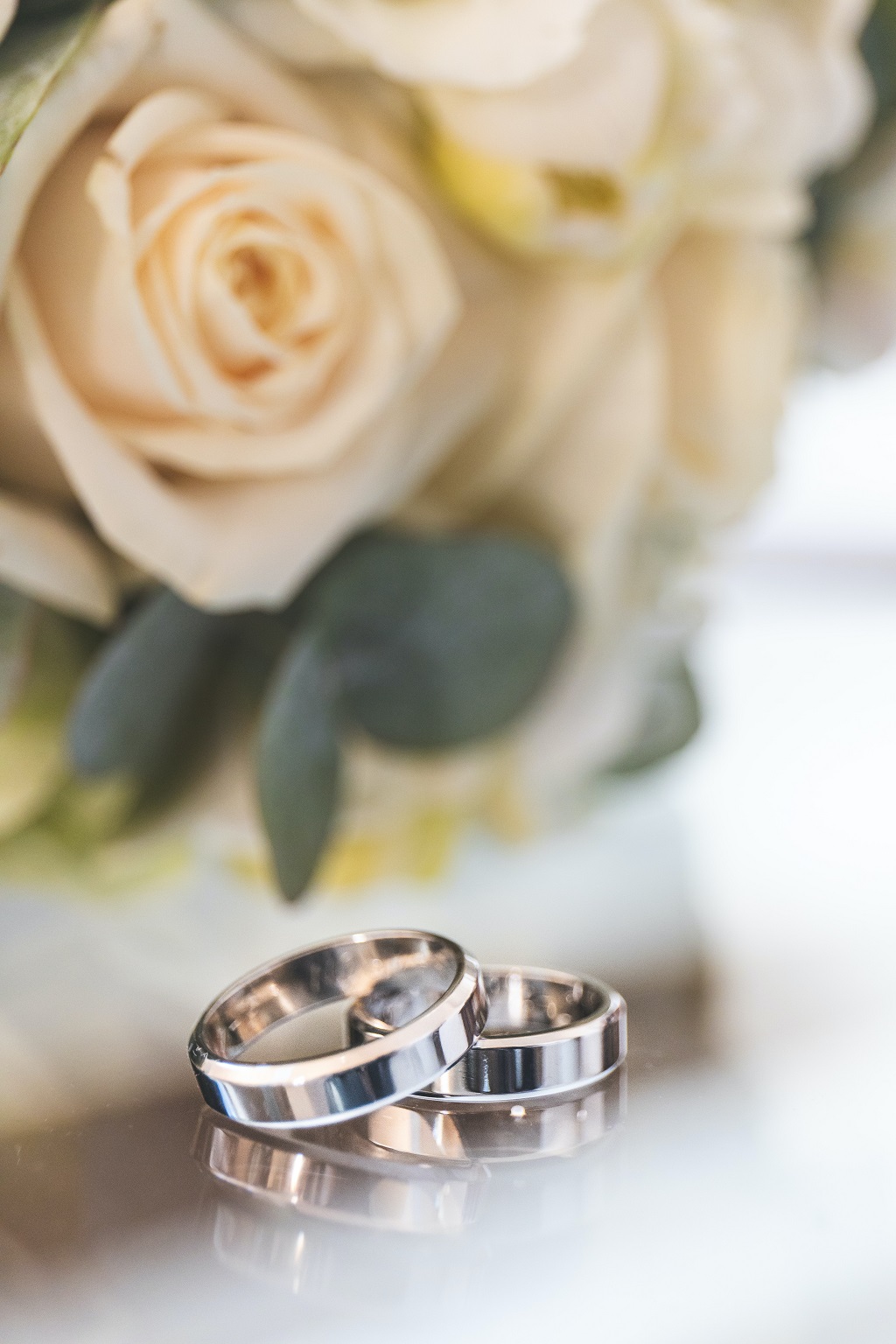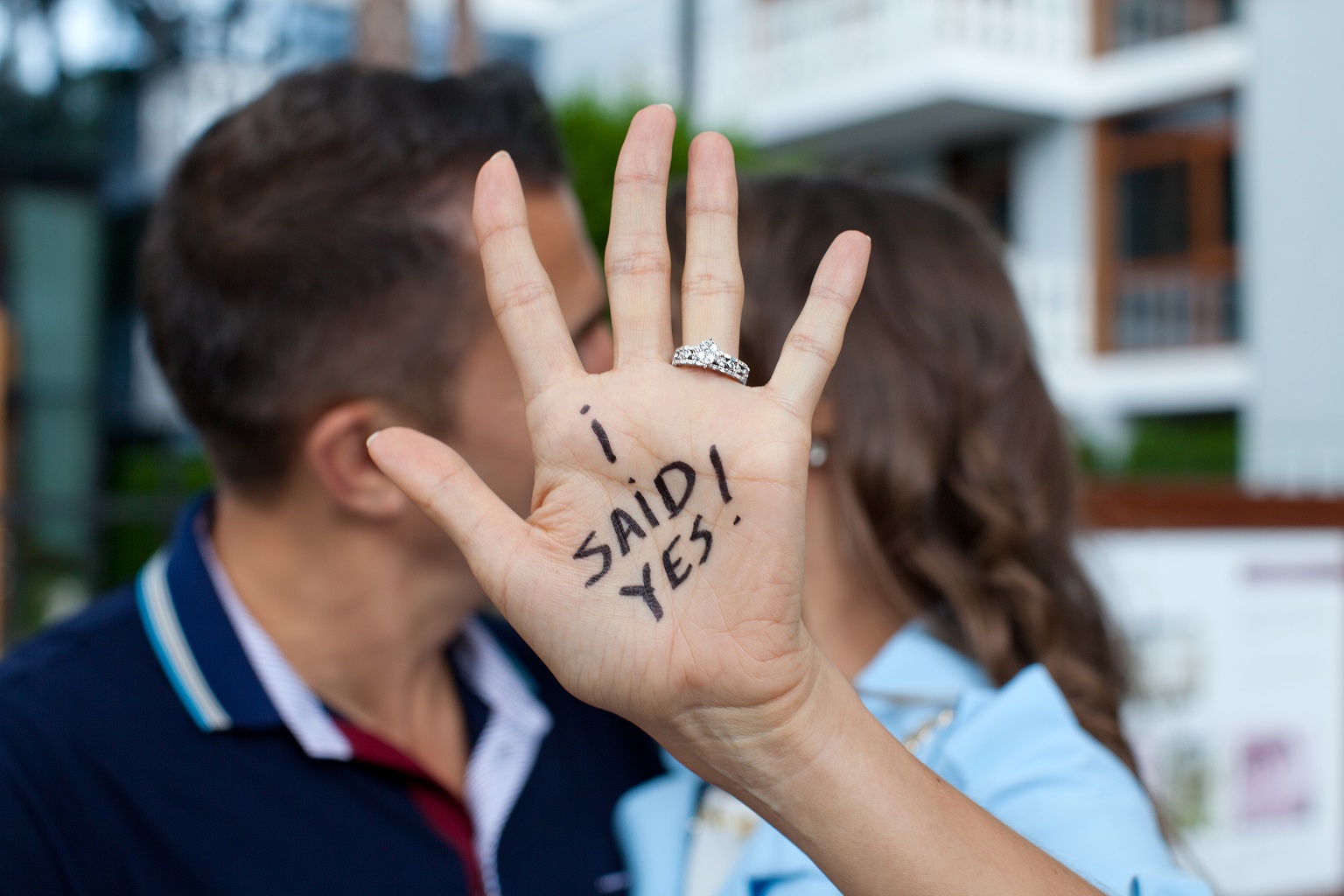Wedding Jewellery Glossary
(Courtesy bhldn.com)
Asscher cut: A diamond which is cut in a square shape with cropped corners and step-like facets.
Band: Not to be confused with the musical dudes that will have all your guests up dancing at the reception. A wedding band was once a plain ring which was only worn by men but the term ‘wedding band’ is now interchangeable with ‘wedding ring’ as men and women now wear them. Wedding bands can now be plain metal rings or can feature fancy designs, adorned with diamonds and patterns.
Birth stone: Gems which correspond with your, or your partner’s, birth month. Each birth stone is symbolic of a different virtue and may add a nice touch to your wedding ensemble.
Blemishes: Imperfections on the surface of a diamond. Blemishes can occur if not handled properly during the cutting process and will lower the value of the diamond.
Carat: The weight of a diamond, measured by a 100 point system. Carat is not the only measurement to determine a diamond’s worth. A small, well cut, colourless diamond may be worth more than a larger, lower quality diamond, despite the carat size difference.
Chandelier earrings: Long, decorative earrings which resemble a chandelier. Chandelier earrings may be attached to studs, hoops or hook earrings. Take caution when shopping for chandelier earrings for your wedding day as heavy earrings can take a toll on your ears after a few hours and may snag your dress.
Choker: A necklace which is worn very close around the neck. A choker of a single strand of pearls is a popular choice for brides. This style of necklace looks best on a slender neck when worn with a dress with a high neckline.
Cluster setting: A ring which features a group of diamonds set together in a decorative pattern. Floral inspired cluster settings are very popular and tend to elongate a woman’s finger.
Collar necklace: a mid-length necklace with several strands. This Victorian style necklace usually looks best with a low neckline or strapless dress.
Cushion cut: Also known as an antique cut. A cushion cut diamond has a slightly rectangular shape, with rounded edges so as to look a little like a cushion.
Diamond: It’s true what they say – diamonds are forever. Diamonds symbolise eternity which is the goal to aim for in marriage. Traditionally, diamonds are only worn in the evening.
Emerald cut: This cut was originally reserved for emerald gems only but is now popularly seen on diamonds, too. An emerald cut features a long rectangular shaped diamond with the longer sides running vertically, along the finger. The facets are cut in a step-like fashion and the corners of the diamond are cropped to meet the centre ‘step’. The way that the facets are cut can reveal flaws in the diamond so high quality diamonds should be used for emerald cuts.
Flawless: A diamond which is completely clear and does contain any inclusions.
Heart cut: A diamond which is cut into the shape of a heart.
Inclusions: Also known as imperfections. A diamond with inclusions is one which has tiny cracks or specs of dirt or other minerals. The more inclusions a diamond has, the lower its quality.
Marquise cut: A diamond cut into an oval shape, with two pointed ends. When set in a ring, the ends point up and downwards so as to look like an eye on its side.
Matinee necklace: A string of pearls which is 20 – 24 inches long and best suits dresses with plunging necklines. A great choice for brides who have very attractive décolletage, which should be shown off.
Opera necklace: A string of pearls which is 28 – 34 inches long. This style of necklace suits a dress with a very high neckline. However, particularly decorative dresses may be detracted from with this type of necklace.
Oval cut: An oval cut diamond features the same brilliance of a round cut diamond but has slightly longer edges, thus forming the shape of an oval. An oval cut diamond can give the appearance of elongated fingers.
Pear cut: Also known as a drop cut. An oval shaped diamond is cut with one pointed edge. The pointed edge can be worn pointing toward or away from the body, depending on your preference.
Pearls: Wearing pearls on your wedding day symbolises harmony and purity in your marriage.
Pendant: An ornament or gem which is designed to dangle from a necklace, creating a feature piece.
Princess cut: A brilliant square cut diamond which allows for the most dazzling light dispersion, second only to the round diamond cut. A princess cut diamond should always be set with four prongs to protect the corners from chipping.
Princess necklace: A necklace which is 17 – 19 inches long. A princess necklace featuring a single strand of pearls is a very popular choice for brides and suits both high and plunging neckline dresses. A princess necklace can usually accommodate a beautiful pendant, too.
Radiant cut: Similar to an Asscher cut diamond but with facets which are cut at an angle which allows for more light to be dispersed from the gem, giving it a ‘radiant’ quality.
Round cut: The most sparkly diamond, with 58 facets, and the most popular choice for engagement rings. A well-cut round diamond should hold a brilliant, multi-coloured light on the face of the diamond.
Setting: Setting refers to the way that a diamond is secured to the ring. Various prongs and metal channels may be used to hold the diamond firmly in place whilst preventing damage to the stone and maximising the amount of light allowed in to the stone.
Solitaire: A single diamond set in a way that draws attention to the diamond’s brilliance. Solitaire settings are commonly used in engagement rings and usually feature a fairly large diamond.
Tennis bracelet: A flexible bracelet which is set with small diamonds, all the way around. A tennis bracelet can be worn by brides who want to make a simple, minimalist statement.







